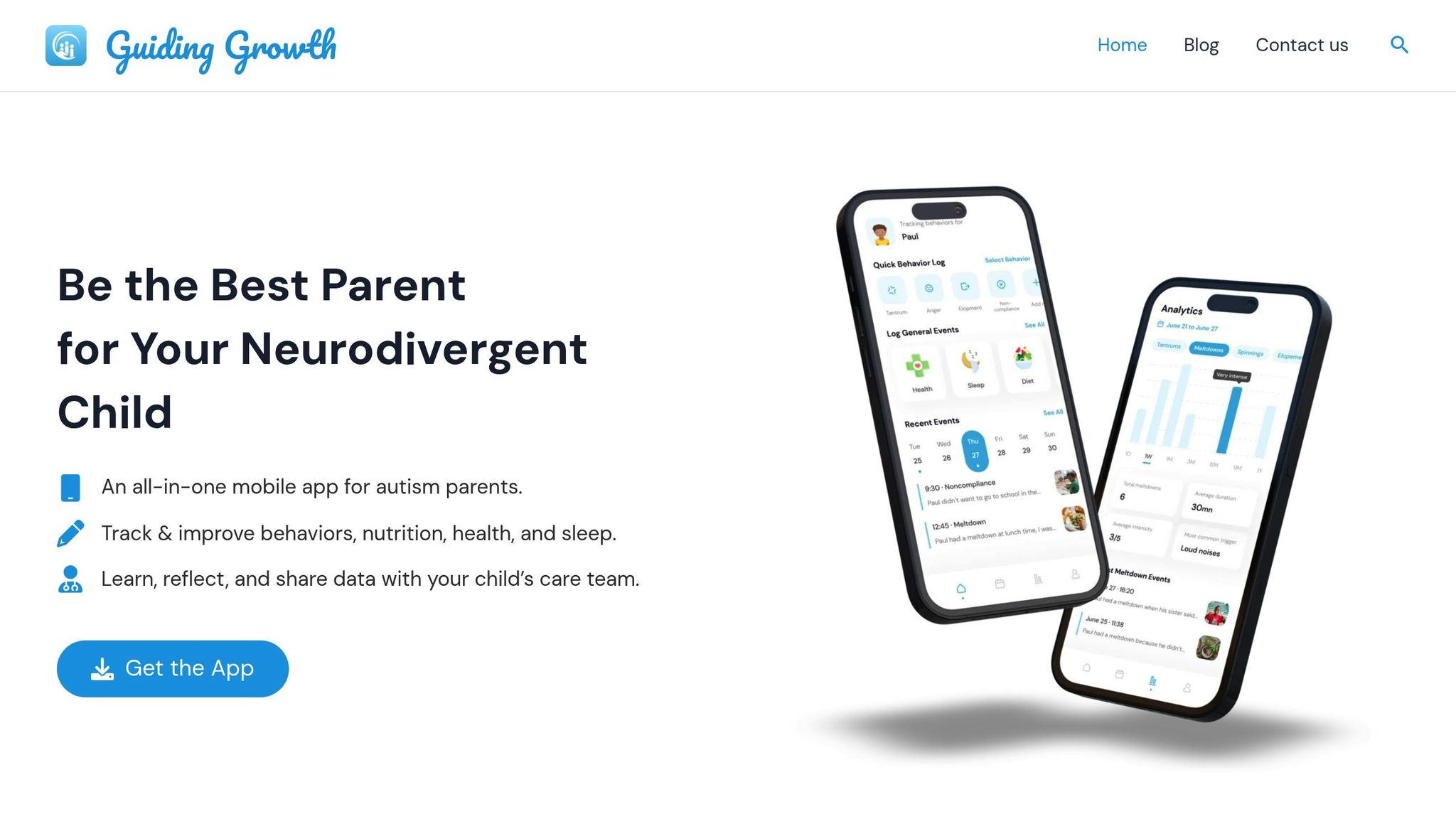Caregiver burnout is the overwhelming physical, emotional, and mental exhaustion that comes from the demands of caring for an autistic child. It affects not just caregivers but entire families. Here’s what you need to know:
- Key Causes: Physical and mental strain, managing autism-specific care (e.g., therapies, meltdowns), and social isolation.
- Warning Signs: Constant fatigue, feeling stressed or disconnected, withdrawing from social interactions.
- Solutions: Prioritize self-care (sleep, nutrition, breaks), build a support network (family, support groups, respite care), and use tools like apps to simplify care routines.
Takeaway: Prevent burnout by spotting early signs, seeking support, and creating manageable routines that balance care and self-care.
How to Recognize and Prevent Caregiver Burnout
Main Causes of Burnout
Understanding what leads to caregiver burnout is key to finding ways to manage it effectively. Below are some of the main factors behind this exhausting experience.
Physical and Mental Strain
Caregiving often requires constant physical effort and mental focus. From providing hands-on care to making countless decisions, the demands can feel endless. Tasks that require specific skills or knowledge only add to the pressure, making the workload even harder to manage.
Autism Care Demands
Caring for an autistic child brings its own set of challenges that can increase the likelihood of burnout. These include:
- Managing therapy schedules and medication routines
- Keeping track of meltdowns, shutdowns, and stimming to identify emotional triggers
In addition to these responsibilities, the emotional toll of social disconnection can further drain a caregiver’s energy and resilience.
Social Isolation
The intense nature of caregiving often leaves little room for social interactions. Caregivers may find themselves cut off from friends and family as they focus their time and energy on their child. This lack of connection can take a serious toll on mental health and emotional strength.
In the next section, we’ll look at how these factors show up as early warning signs of burnout.
Warning Signs of Burnout
Burnout can show up in different ways – physical, emotional, and behavioral. Here are some common signs to watch for:
- Physical: Constant tiredness that doesn’t go away.
- Emotional: Feeling overwhelmed, stressed, or disconnected from others.
- Behavioral: Pulling back from social interactions with friends and family.
Recognizing these signs early is key. Let’s look at ways to address and manage them effectively.
sbb-itb-d549f5b
Ways to Prevent and Manage Burnout
Spotting the early signs of burnout is just the first step. Taking action to protect your mental and physical health is equally important.
Self-Care Essentials
Focus on the basics: get enough sleep, eat balanced meals, move your body daily, and take short breaks to recharge. Also, lean on others for help when you need it – no one should shoulder everything alone.
Create a Support Network
Caregiving doesn’t have to be a solo effort. Building a network of family, friends, and professionals can help ease the burden. Here are a few ideas:
- Reach out to family members for assistance or respite
- Join local support groups to connect with others in similar situations
- Consider counseling to develop practical coping strategies
- Look into respite care services in your area for scheduled breaks
How Guiding Growth Can Help

Guiding Growth simplifies caregiving by keeping everything in one place:
- Track behaviors, sleep, nutrition, and health to identify patterns
- Share updates with family and healthcare providers in real time
- Stay organized by managing medications, appointments, and therapy sessions
Creating Better Care Routines
Developing routines that conserve energy and maintain consistency is an important step in caregiving. These routines can make your day more manageable and help you focus on both care and self-care.
Making Time for Breaks
Taking regular breaks is a key way to avoid feeling overwhelmed. Find natural pauses in your day – like when your child is in therapy or occupied with a quiet activity – and use that time to rest. Work with family members or other caregivers to share responsibilities during these moments. This way, you can recharge without feeling guilty or neglectful.
Using Apps to Simplify Care
Tools like Guiding Growth can simplify caregiving by organizing important information in one place. This app tracks behaviors, sleep patterns, nutrition, medications, and appointments, reducing the mental load of keeping everything straight.
Refining Routines
Guiding Growth also offers features to streamline your routine. It sends automated reminders, logs daily data, and identifies trends that can help you adjust your care plan. For example, the app can pinpoint triggers. You can even share detailed reports with other caregivers or professionals, making it easier to work together. This not only saves time but also allows you to focus more on direct care and your own well-being.
Conclusion: Keys to Long-Term Care Success
Long-term caregiving thrives when built on three main principles:
-
Making Decisions Based on Data
Tracking tools can reveal patterns and triggers, helping you develop care strategies that actually work. -
Teamwork with Professionals
Sharing detailed updates with healthcare providers ensures better communication and more coordinated care plans. -
Prioritizing Self-Care
Regular breaks and support systems in your routine are essential to avoid burnout.
Caregiving isn’t about getting everything perfect – it’s about creating systems that fit your needs and support your child’s well-being over time.


